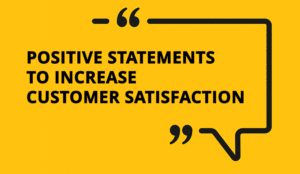We introduce the basics of welcome calls, suggesting how contact centres can best use them to increase customer satisfaction and loyalty.
What Is a Welcome Call?
Welcome calls offer organizations the opportunity to get in touch with new customers and say “thank you”. These calls are also known as “cuddle calls” or “cushion calls”.
Yet, to drive value from these calls, other motives are also attached. Generally, the underlying purpose of such a call is down to one of two reasons. These are:
- To introduce the customer to the business
- To undertake a compliance check (a common practice in regulated industries)
An introductory call reinforces in the customer’s mind that they’ve made the right decision.
While offering such reassurance, these calls allow the customer to ask questions and to solve problems about the product or service that they recently purchased.
Also, advisors may gather feedback, cross-sell and solve any problems that may have arisen post-purchase.
Compliance calls, on the other hand, are mostly made by companies that set cooling-off periods. Within such a period, the call checks that several processes related to the purchase happened compliantly.
Be clear on the overriding purpose of welcome calls and make sure that advisors have a set structure to follow.
Also, a compliance call must come before the close of the cancellation period. Why? Because if the product was sold non-compliantly, the customer then has the opportunity to back away from the deal.
Of course, contact centres can blend both motives. Just be clear on the overriding purpose of welcome calls and make sure that advisors have a set structure to follow.
After all, they are an expensive resource, especially if every new customer is dialled. Therefore, each call needs to deliver strategic value.
If the purpose is limited, it’s likely to be more cost efficient to send a welcome email instead.
What to Include in a Welcome Call
Depending on the purpose of its welcome call initiative, a contact centre may wish to include some of the following ideas.
1. A Thank You
Thanking customers for their business is the ideal place to begin a welcome call. It shows that the organization genuinely cares.
Of course, many will send automated thank-you messages, but it isn’t the same. Hearing the words is much more pertinent.
With the thank-you in place, the advisor may also kick the call off on the right foot.
2. Company Introductions
After the thank-you, offer to take the customer through the key features of their acquisition, sharing a few top tips that will further its use. The aim is to sell the benefits of what the customer’s purchased.
“Think of small things that will further attach the customer to your brand, which come at no additional cost to them,” says Garry Gormley, Founder of FAB Solutions.
A good example is to introduce customers to the company’s app or their website portal. Both are free and can further enrich the customer’s experience.
3. Customer Questions
Often, customers get stuck with a new product or service. A welcome call provides a good opportunity for the customer to ask questions and for the company to proactively problem-solve.
For example, common questions that businesses can proactively solve include:
- In car insurance – “Do I need a green card to drive in Europe?”
- In technology – “How do I get this feature to work?”
- In mobile phones – “How do I set up my phone for data roaming or use it abroad?”
Customers then get up and running more easily and the contact centre reduces the number of frustrated inbound calls that they receive.
In fact, if the contact centre reaches out to the customer during quieter periods in the business day, the overall impact on resource planning may be a very happy surprise.
Also, having a helpful conversation that means the customer doesn’t need to call the contact centre in the future will likely increase customer loyalty.
4. Customer Health Checks
Include a simple question to find out how likely the customer is to leave after their cancellation period.
A good example is: has the company so far met expectations? Then, the advisor has the chance to better satisfy the customer, handle their queries and offer excellent proactive customer service.
Such a practice may also improve retention and pinpoint the most satisfied customers. These may react more positively to a cross-sell pitch.
5. Cross-Sell Opportunities
The sale mustn’t become the central focus of the call. Yet a small, cheeky plug won’t do much harm – if the advisor is careful in how they do so.
Run through the introduction or compliance process first. Only then, with rapport on the advisor’s side, will a cross-selling statement bring value. Too soon, and the customer will feel suffocated.
In terms of the statement itself, make it personal to the customer. If they referenced a different product in the original sales interaction, reflect on that. If not, perhaps highlight a product that pairs well with their purchase. Such an approach will drive value.
However, it could be better – depending on the sector – to gain the customer’s permission for a future outbound call. The customer is then much more settled with their purchase.
6. Additional Information Requests
Welcome calls offer businesses the opportunity to plug gaps in their customer records and set customers up correctly on contact centre systems.
Any additional information that’s learned during the call – such as key customer needs – may also be recorded in the CRM. Such a practice will help future advisors who deal with the customer to provide better customer service.
7. Feedback Requests
The beauty of collecting feedback a little while after the experience is that customers can reflect back with a clear mind.
The beauty of collecting feedback a little while after the experience is that customers can reflect back with a clear mind.
In doing so, the contact centre picks up continuous improvement ideas while collecting data for a customer experience metric score – such as customer satisfaction (CSAT), customer effort or Net Promoter Score (NPS) – too.
Gathering feedback also enables the contact centre to gather insights for marketing. For example, an advisor may uncover information such as where the customer first found out about the purchased product.
8. A Test of Customer Understanding
“Welcome calls are a great acid test, not only for the overall experience but for the customer’s understanding of what they’ve bought,” says Garry.
Through this clarification, contact centres can remove ambiguity and identify mis-sell practices. This will likely increase retention rates further down the line.
9. Opt-Ins for Email Lists
Generally, when faced with a tick box on a company’s website – which allows customers to opt in to receiving marking content – they say “no”.
However, it’s much harder to say “no” to a person than a device. A welcome call provides the perfect opportunity to increase opt-in rates – once a good rapport has been established. All the advisor needs to do is ask.
10. Referral and Review Requests
During the welcome call, many contact centres will ask the customer if they know of anyone else that might benefit from the company’s products and services. This is great for fostering referrals.
To sweeten the pot, try empowering advisors to offer the customer an incentive for a referral. Of course, this incentive may only apply once the referred customer signs up. Nevertheless, it’s a great hook to lure in further business.
A final nice touch is to send an automated message thanking the customer for their time and sharing a link to a third-party review site. Doing so soon after a welcome call is smart, as most customers will have just enjoyed a positive, engaging conversation.
Best Practices for Welcome Calls
To give a welcome call programme the best chance of success, don’t forget to follow each of the top tips highlighted below.
Create a Clear Resource Plan
Run a pilot with a small group of advisors. Perfect the strategy and then start calculating Average Handling Time (AHT) and calls per hour. This enables the contact centre to create a winning resource plan.
Run a pilot with a small group of advisors. Perfect the strategy and then start calculating Average Handling Time (AHT) and calls per hour. This enables the contact centre to create a winning resource plan.
Also, think about the timings within the plan. If it happens too soon within the cancellation period – and it’s not a compliance check – then the contact centre risks encouraging cancellations.
Finally, consider the outbound contact strategy. Will it involve a dialler? What time of the day is best to contact customers? Think this through.
Segment Customers
Will all of your customers receive a welcome call or just high-value customers? It’s important to consider where they will deliver return on investment (ROI).
For this reason, customer segmentation plays an integral role in many welcome call strategies.
One particularly great example is segmenting vulnerable customers. Advisors may then make sure that they have a clear understanding of what they bought and take compassionate customer care to the next level.
Gaining a reputation for treating vulnerable customers well may also result in a greatly enhanced reputation, which complements good business performance.
Discover lots more top tips for better serving vulnerable customers by reading our article: Dealing With Vulnerable Customers
Use the Call to Eliminate Extra Communication
Think about all the pieces of communication that are sent to new customers within the first 14-day period. There may be welcome packs, emails, feedback SMS messages. All this can become a little overwhelming.
So, don’t just add another piece of communication. Don’t be that irritating “spammer”. Instead, use a welcome call to eliminate some of that additional communication and get the job done in one fell swoop.
Ringfence the Welcome Call Programme

Garry Gormley
“When service levels drop to unacceptable lows, the first initiative that falls to the wayside is welcome calls,” says Garry.
Yet, if they deliver significant ROI, reconsider this practice. In the long run, it may be more valuable to ringfence the welcome call programme.
The tricky part is in proving value. This comes back to logging calls properly and A/B testing – over a long period – and looking for positive correlation with customer lifetime value (CLV).
Want to measure CLV? Well, you’re in luck. We’ve compiled an informative resource, which you can access here: How to Calculate Customer Lifetime Value – The Formula
Consider Post-Renewal Calls Too
Welcome calls aren’t only for new customers. Post-renewal welcome calls also have their benefits.
During these calls, the contact centre can refresh the customer’s memory of important information. They may also gain new insights into the full customer journey, as opposed to only the first few stages.
When doing this, be even more careful when considering who receives a cuddle call.
For example, say the contact centre also ran a pre-renewal call initiative. If a customer complained during that interaction, it’s best not to call them again, as the advisor may end up reopening that complaint.
Welcome Call Mistakes to Avoid
Like many contact centre initiatives, getting welcome calls right isn’t always plain sailing. Several obstacles can push the project off track. Here are three common examples.
Lacking a Clear Purpose
Welcome calls require a significant resource. Contact centres must staff the phones especially to make the calls, which comes at a cost.
To justify such a cost, a strong purpose is needed. Define this clearly – as well as targets and segments – so the call is structured in a way that benefits the customer experience.
The final benefit to having a clear purpose is that it helps to identify the ideal skill set of advisors who make the calls.
Failing to Log Findings Clearly
Golden nuggets of information will go missing if there’s no clear strategy for how to log insights.
It’s good practice to log every piece of new, actionable information that comes from a welcome call. In most cases, such information is best recorded within the contact centre’s CRM system.
Doing so allows the business to harvest ideas from customers and look for trends. This illuminates big improvement areas.
Such golden nuggets of information will go missing if there’s no clear strategy for how to log insights.
Pushing Additional Sales
A welcome call is not a sales call. If an advisor pushes for a sale too early, they will likely scare the customer off.
For especially expensive purchases, this is a bad route to go down. The customer’s response may even verge on disbelief that the company is trying to extract more money from them.
Final Thoughts
A welcome call programme should stem from a strong purpose. From this, contact centres can create a clear welcome call structure for advisors to follow.
The structure may include anything from customer health checks to feedback appeals, cross-selling pitches to referral requests.
Then, after carefully creating a resource plan, segmenting the customer base and developing a clear strategy for logging insights, advisors can start picking up the phones.
A friendly “hello”, “thank you” and offer of extra support may make all the difference when improving the customer experience.
Looking for more ideas to improve customer experience? The following articles might just contain the golden nuggets of information that you’re looking for:
- 20 Things Advisors Can Do to Improve the Customer Experience
- The Contact Centre Manifesto – Don’t Do ANYTHING Until You Have Done These 10 Things!
- Improve Customer Experience: 5 Strategies That You NEED to Try
- Courtesy Calls: A Great Way to Enhance CX
Author: Charlie Mitchell
Reviewed by: Hannah Swankie
Published On: 26th Oct 2022 - Last modified: 15th Aug 2024
Read more about - Customer Service Strategy, Call Handling, Customer Engagement, Customer Service, CX, Garry Gormley









































